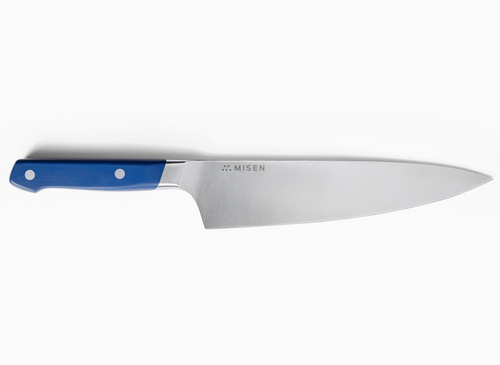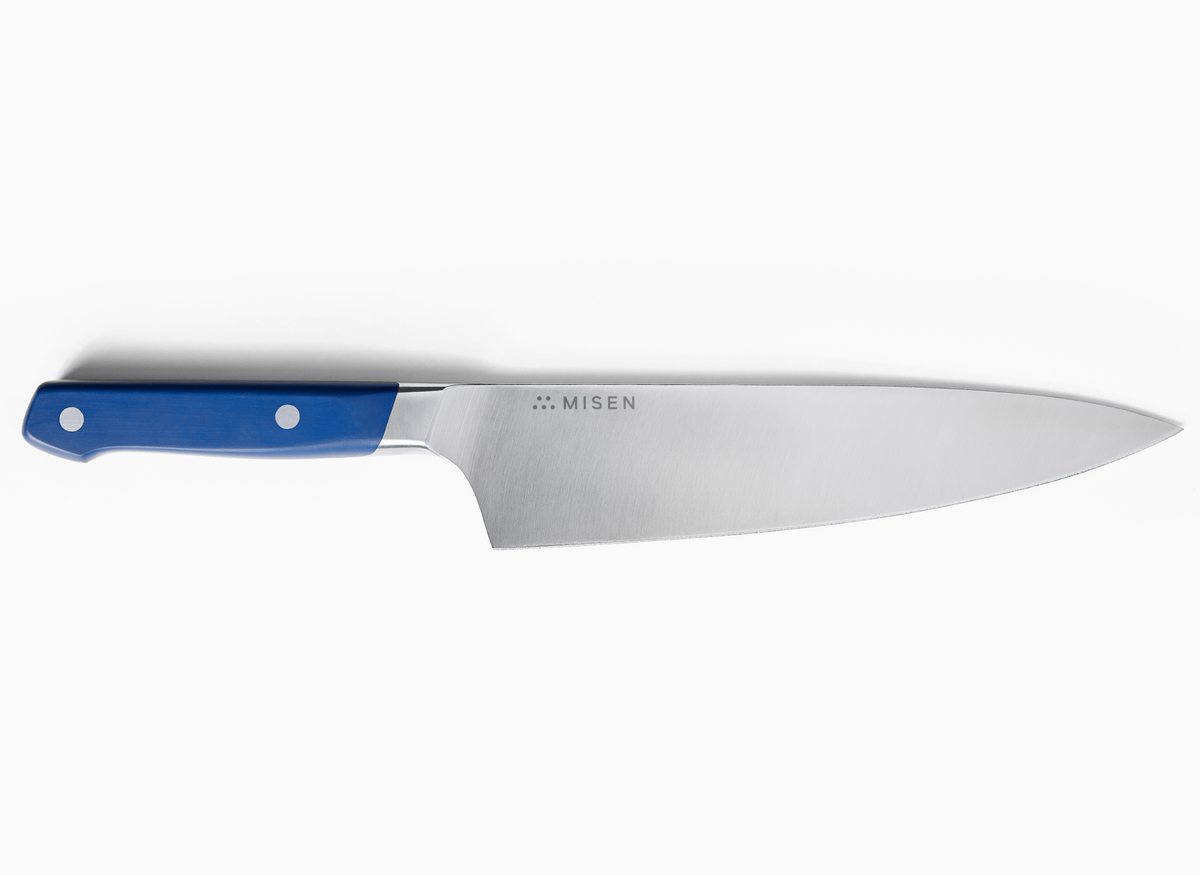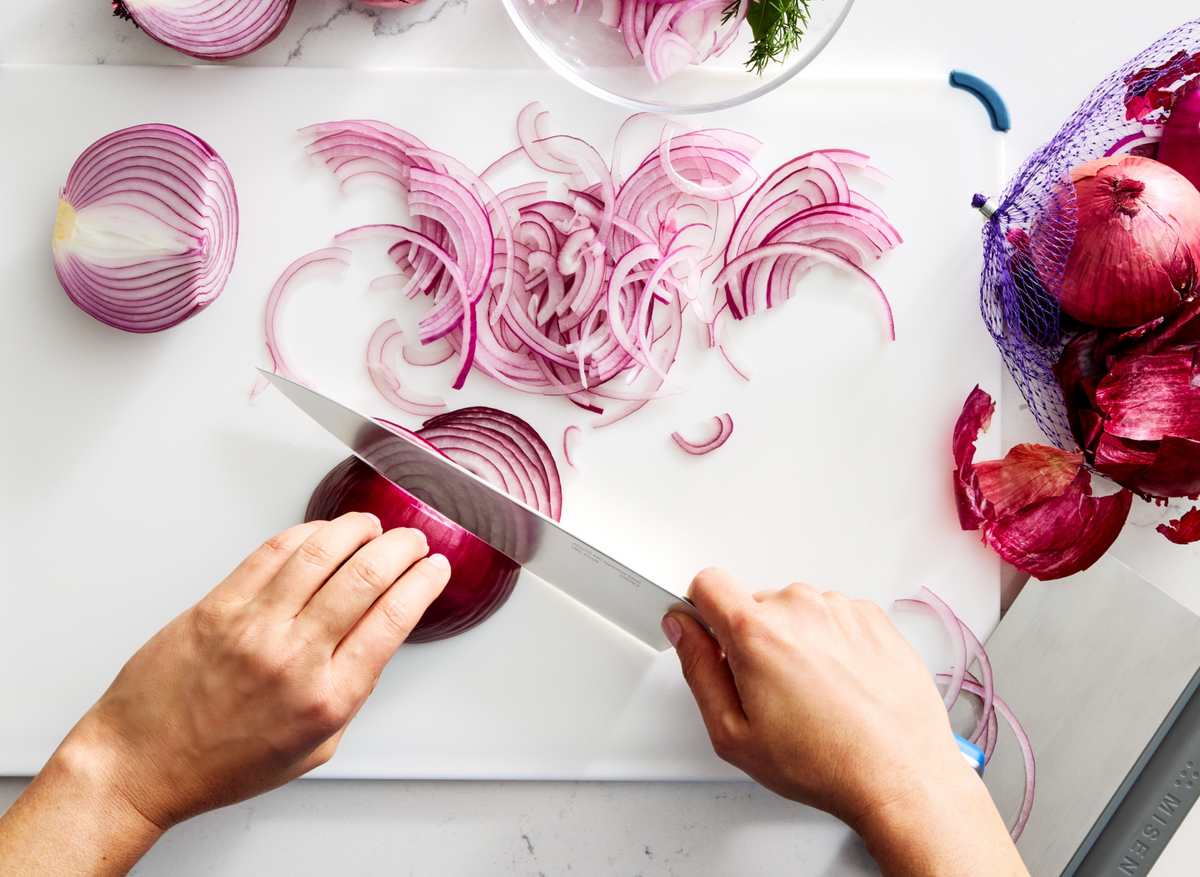Demystifying PTFE Coating in Cookware

PTFE coatings have revolutionized cookware, offering non-stick properties and durability. This article explores the science behind PTFE, its applications in kitchen utensils, and addresses safety concerns. We'll also provide proper use and maintenance tips to help you make the most of your PTFE-coated cookware.
Introduction to PTFE Coating
Definition and chemical composition of PTFE
Polytetrafluoroethylene (PTFE) is a synthetic fluoropolymer with a unique chemical composition. Its molecular structure consists of carbon atoms bonded with two fluorine atoms, forming a stable and inert compound. This chemical composition grants PTFE its remarkable characteristics, including high thermal stability, low friction coefficient, and hydrophobicity[1].
Interestingly, during surface modification processes such as extreme ultraviolet (EUV) irradiation, some carbon atoms may become bonded with three fluorine atoms, altering the material's surface properties. This modification can enhance the already impressive features of PTFE, making it even more suitable for various applications[1].
Common applications in kitchen utensils
PTFE coatings have transformed the landscape of kitchen utensils, offering a wide range of applications. The most prominent examples are cookware and bakeware, where non-stick coatings provide easy food release and cleanup for pots, pans, and baking sheets[2].
Beyond traditional cookware, PTFE coatings are utilized in small electric appliances such as pressure cookers, irons, and grills, enhancing their functionality and ease of use. The versatility of PTFE extends to various kitchen tools, including spatulas, whisks, and cooking spoons, where the non-stick properties prevent food from adhering to the utensil surface.
PTFE-coated bakeware, such as muffin tins and cake pans, allows for effortless removal of baked goods without the need for excessive greasing or flouring. As the technology continues to evolve, new applications for PTFE in kitchen utensils are likely to emerge, further expanding its presence in the culinary world[3].
The Science Behind Non-Stick Properties
Molecular structure and its impact on non-stick performance
The molecular structure of PTFE is the key to its remarkable non-stick performance. PTFE consists of a long chain of carbon atoms, each bonded to two fluorine atoms, creating a strong and stable polymer[4]. This unique arrangement results in a low friction coefficient and high chemical resistance.
The fluorine atoms form a protective sheath around the carbon backbone, preventing other molecules from adhering to the surface. This molecular configuration gives PTFE its hydrophobic nature, causing water and other liquids to bead up and roll off easily. The strong carbon-fluorine bonds also contribute to PTFE's thermal stability, allowing it to maintain its non-stick properties even at high temperatures[5].
The molecular structure's impact on non-stick performance is further enhanced by the material's low surface energy, which minimizes molecular interactions between the coating and food particles. This unique combination of properties at the molecular level makes PTFE an ideal choice for cookware coatings, industrial applications, and various other uses where non-stick functionality is crucial[6].
Heat distribution and cooking efficiency
PTFE coatings in cookware significantly impact heat distribution and cooking efficiency. These coatings allow for even heat distribution across the cooking surface, preventing hot spots that can lead to uneven cooking or burning. The non-stick properties of PTFE enable cooking at lower temperatures, as food is less likely to adhere to the surface and burn. This energy-efficient cooking method not only saves time but also preserves nutrients in food.
PTFE-coated cookware can withstand temperatures up to 260°C (500°F), making it suitable for various cooking techniques[7]. However, it's crucial to avoid preheating empty pans on high heat, as temperatures above 348°C (660°F) can cause coating deterioration[8].
To maximize efficiency, it's recommended to use a stove burner that matches the pan's bottom size and to utilize the stove's exhaust fan during cooking. These practices not only enhance cooking performance but also contribute to the longevity of the cookware, aligning with sustainability efforts in the kitchen[9].
Comparison with other non-stick technologies
While PTFE coatings have long been a staple in non-stick cookware, other technologies have emerged to offer alternatives. Ceramic coatings, derived from silica-based materials, provide a non-toxic option with excellent heat resistance. However, PTFE-coated pans often outperform ceramic in terms of longevity and consistent non-stick performance over time[10].
Another contender in the non-stick arena is seasoned cast iron, which offers a naturally slick surface and superior heat retention, albeit with some limitations for acidic foods[11]. Each technology presents unique advantages and drawbacks, with factors such as durability, heat tolerance, and potential health concerns influencing consumer choices.
For those looking to explore alternative cooking surfaces, our carbon steel wok offers an excellent balance of non-stick properties and versatility. It's perfect for high-heat cooking and develops a natural non-stick patina over time[12].
Safety Concerns and Misconceptions
PFOA controversy and its elimination from production
The PFOA controversy surrounding PTFE coatings in cookware has been a significant concern for consumers and health authorities alike. Perfluorooctanoic acid (PFOA), once used in the production of non-stick coatings, was linked to various health issues, including thyroid disorders, chronic kidney disease, liver disease, and certain cancers[13].
A 1999 study revealed that 98% of Americans had detectable levels of PFOA in their blood, prompting the U.S. Environmental Protection Agency (EPA) to take action[14]. In 2006, the EPA launched the PFOA Stewardship Program, challenging major manufacturers to eliminate PFOA from their production processes and emissions by 2015[15].
This initiative proved successful, with companies meeting or exceeding the program's goals. Consequently, since 2013, all non-stick products, including cookware, have been PFOA-free[13]. The elimination of PFOA from production has significantly reduced health concerns associated with PTFE-coated cookware, although consumers are still advised to follow proper usage guidelines to ensure safety.
Temperature limitations and potential risks
PTFE-coated cookware exhibits remarkable heat resistance, but it's crucial to understand its temperature limitations to ensure safe usage. While these pans can withstand temperatures up to 500°F (260°C) under normal cooking conditions, exceeding this threshold can lead to potential risks[16].
When heated above 662°F (350°C), PTFE begins to degrade, releasing fine particles and gaseous compounds that can cause lung damage if inhaled[17]. This degradation can result in 'polymer fume fever' or 'Teflon flu,' characterized by temporary flu-like symptoms such as fever, shivering, sore throat, and coughing.
It's worth noting that birds are particularly susceptible to these fumes, with reports of pet birds dying after exposure to overheated non-stick pans[17]. To mitigate these risks, it's essential to avoid preheating empty pans, use appropriate heat settings, and ensure proper ventilation while cooking. By adhering to these guidelines, users can safely enjoy the benefits of PTFE-coated cookware without compromising their health or the well-being of their pets.
Scientific studies on PTFE safety in cookware
Scientific studies on PTFE safety in cookware have yielded mixed results, highlighting the need for further research. A comprehensive review of PTFE-coated non-stick cookware toxicity concerns revealed that at normal cooking temperatures, these utensils release various gases and chemicals with mild to severe toxicity potential[18].
However, the toxicity and fate of ingested PTFE coatings remain poorly understood. The emergence of alternative chemicals used to replace PFOA in PTFE production has raised new concerns about potential similar toxicities. These findings underscore the importance of more extensive and systematic research efforts to address the prevailing uncertainties surrounding human exposure and toxic effects of PTFE and its associated compounds.
Studies on polymer fume fever, a condition associated with inhaling thermal degradation byproducts of fluorocarbons, have provided more concrete insights. This underrecognized flu-like illness typically occurs when PTFE-coated cookware is overheated, with symptoms including fever, malaise, dyspnea, and chest tightness[19]. While recovery is usually complete within a few days, the potential for more severe complications in cases of significant exposure highlights the importance of proper use and ventilation when cooking with PTFE-coated utensils.
Regarding cancer risk, the American Cancer Society states that there are no proven risks to humans from using non-stick cookware[20]. However, concerns persist about perfluorooctanoic acid (PFOA), a chemical previously used in non-stick production. While PFOA has been phased out since 2013, studies have suggested possible links between PFOA exposure and certain cancers, prompting ongoing research and regulatory efforts to monitor and control PFAS chemicals in consumer products.
Proper Use and Maintenance of PTFE Cookware
Recommended cooking temperatures and practices
To ensure safe and effective use of PTFE-coated cookware, it's crucial to adhere to recommended cooking temperatures and practices. Studies have shown that PTFE remains non-toxic and inert when used as a coating, but it can start producing fumes at temperatures exceeding 260°C (500°F)[21].
To prevent overheating, avoid preheating empty pans for more than a few minutes and maintain medium heat settings during cooking. This approach not only ensures safety but also enhances flavor development through a process known as the "lighter side of browning." This method involves slowly cooking food in its natural juices over medium heat, allowing nutrients to meld into the food rather than stick to the pan[22].
For browning and deglazing techniques, non-stick pans work well, especially when creating quick pan sauces. Experiment with various liquids for deglazing, such as wines, stocks, fruit juices, or even natural sweeteners like maple syrup or balsamic vinegar, to enhance flavors while maintaining the integrity of the non-stick surface[22].
By following these temperature guidelines and cooking practices, you can safely enjoy the convenience of PTFE-coated cookware while maximizing its culinary potential.
Cleaning and care instructions for longevity
To maximize the longevity of PTFE-coated cookware, proper cleaning and care are essential. Handwashing is preferable to dishwasher use, as high temperatures and harsh detergents can degrade the non-stick surface. Use mild dish soap and a soft cloth or sponge, avoiding abrasive tools like steel wool or stiff brushes.
For stubborn residue, soak the pan in warm, soapy water before gently scrubbing. A paste of baking soda and water can help remove burnt-on food without damaging the coating[23]. When cooking, stick to low and medium heat settings, as high temperatures can damage the non-stick properties over time.
Always add oil, water, or food before heating the pan to protect the coating and serve as a temperature gauge[23]. Avoid using non-stick cooking sprays, which can create a residue that builds up and ruins the surface. Instead, opt for a small amount of oil or butter[23].
To prevent scratches, use wooden or silicone utensils rather than metal ones, and avoid cutting food directly in the pan. When storing, place pan protectors or soft cloths between stacked cookware to protect the non-stick surface[24]. By following these guidelines, you can significantly extend the life of your PTFE-coated cookware and maintain its non-stick properties for years to come.
Signs of wear and when to replace PTFE-coated items
Recognizing signs of wear in PTFE-coated cookware is crucial for maintaining food safety and optimal cooking performance. One clear indicator is visible scratches or flaking on the non-stick surface, which can compromise its effectiveness and potentially release particles into food.
Discoloration or dulling of the finish, especially after repeated use at high temperatures, suggests the coating may be breaking down and no longer safe to use[25]. Another telltale sign is a significant decrease in non-stick properties, requiring more oil or resulting in food sticking frequently. When these signs appear, it's time to replace the cookware.
Most PTFE-coated items have a lifespan of 1-5 years, depending on usage and care[26]. To extend the life of your non-stick cookware, avoid metal utensils, high heat, and abrasive cleaning methods. Instead, opt for silicone, plastic, or wooden utensils, cook on low to medium heat, and hand wash with gentle detergents[27].
By being vigilant about these signs and following proper care instructions, you can ensure the safety and longevity of your PTFE-coated cookware.
Future of Non-Stick Technology
Innovations in PTFE formulations and application
The realm of PTFE coatings continues to evolve, with manufacturers pushing the boundaries of innovation to enhance performance and address consumer concerns. One groundbreaking development is non-stick technology that mimics nature's durability by incorporating raised patterns on the surface. This revolutionary skin technology offers outstanding durability and superior scratch resistance, keeping cookware aesthetically pleasing for longer periods[28].
Another exciting innovation allows producers to create customized designs with multiple base colors and ink options, catering to diverse consumer preferences. For those seeking a blend of style and functionality, eye-catching cookware that can transition seamlessly from stovetop to tabletop is now available[28].
In response to the growing popularity of induction cooking, non-stick coatings have been developed that integrate ferromagnetic stainless steel particles to ensure even heating on induction cooktops[28]. These advancements in non-stick technology not only address safety concerns but also offer improved durability, versatility, and aesthetic options, revolutionizing the cooking experience for both home cooks and professional chefs alike[29].
Alternative materials and eco-friendly options
As consumers become more aware of the potential health and environmental impacts of traditional non-stick cookware, alternative materials and eco-friendly options have gained popularity. Ceramic cookware has emerged as a leading non-toxic alternative, offering a slick cooking surface without the use of PFAS chemicals[30].
Some brands utilize ceramic coatings derived from sand, providing effective non-stick properties while being free from PTFE, PFOA, and heavy metals[31]. For those seeking a more traditional approach, cast iron and carbon steel pans offer naturally non-stick surfaces when properly seasoned, with the added benefit of being incredibly durable and able to withstand high temperatures[32].
Stainless steel cookware provides a versatile and chemical-free cooking experience, albeit without non-stick properties[32]. For the ultimate in eco-friendly and non-toxic cookware, pure ceramic options offer a completely inert cooking surface made from clay, water, and natural minerals, suitable for low and slow cooking techniques[31]>.
Consumer trends and industry response to health concerns
The non-stick cookware market has witnessed significant growth, driven by changing consumer preferences and health concerns. Projected to reach USD 11,728 million by 2032, with a CAGR of 5.75%, the industry is responding to demands for healthier cooking options and convenience[33].
However, this growth is accompanied by increasing scrutiny of PFAS-based coatings. A study revealed that 79% of tested non-stick cooking pans contained PTFE, raising concerns about potential health risks and environmental impact[34]. In response to these concerns, manufacturers are innovating with alternative materials.
Ceramic coatings, incorporating colloidal silica, have emerged as a promising PFAS-free option. These coatings offer enhanced durability, temperature resistance, and scratch resistance, addressing consumer demands for safer and more sustainable cookware options[35]. The industry's shift towards eco-friendly and safer non-stick coatings reflects a broader trend of prioritizing consumer health and environmental sustainability in product development.
Conclusion
PTFE coatings have revolutionized cookware, offering unparalleled non-stick performance and ease of use. While past concerns about PFOA have been addressed, it's crucial to use and maintain PTFE-coated cookware properly to ensure safety and longevity. As the industry continues to innovate, we're seeing exciting developments in non-stick technology and alternative materials that prioritize both performance and health.
Whether you're a seasoned chef or a home cooking enthusiast, having the right tools can make all the difference in your culinary adventures. Ready to elevate your cooking game? Shop Now and discover our range of innovative kitchen essentials designed to help you cook better.
- PTFE coatings offer excellent non-stick properties due to their unique molecular structure.
- Proper use and maintenance of PTFE-coated cookware can ensure safety and longevity.
- PFOA has been eliminated from PTFE production, addressing major health concerns.
- Innovations in non-stick technology are focusing on durability, versatility, and eco-friendliness.
- Alternative materials like ceramic and carbon steel are gaining popularity as non-stick options.
- Surface Modification of PLLA, PTFE, and PVDF with Extreme Ultraviolet (EUV) to Enhance Cell Adhesion
- Teflon™ Coatings in Cookware and Bakeware
- Nonstick Cookware Brands: PTFE or Ceramic?
- Demystifying PTFE: A Closer Look at Non-Stick Capabilities
- Thermal stability and tribological properties of PTFE composites
- What is Teflon?
- Nonstick Coatings FAQ
- Teflon™ Coatings Safety
- The Perfect Coating
- Nonstick vs. Ceramic Skillets: Which Is Better?
- Ceramic vs. Teflon Cookware Choices
- Misen Carbon Steel Wok
- Is Nonstick Cookware Like Teflon Safe to Use?
- Is Teflon Coating Safe?
- What Is PFOA?
- Teflon flu: Risks, cooking safety tips and nonstick alternatives
- Ask a Toxicologist: Is it Safe to Use Teflon Pans?
- Toxicity of cookware: A review
- Polymer Fume Fever
- Does Teflon cause cancer?
- Safe Practices for Non-stick Pans
- Browning & Deglazing
- Tips for Using Nonstick Pans
- How to Care for Nonstick Pans
- Teflon™ Coatings Safety
- Nonstick Cookware Brands: PTFE or Ceramic?
- Make Your Nonstick Frying Pan Last
- Innovations in Nonstick Coatings
- Revolutionizing Cooking: The Science Behind Nonstick Cookware
- Best Eco-Friendly Cookware Choices
- Non-Toxic Cookware Brands to Keep Chemicals Out of Your Food
- The Best Non-Toxic Cookware for Healthy Meals
- Non-Stick Cookware Market
- Undisclosed PFAS Coatings Common
- Revolutionary ceramic coatings with Levasil colloidal silica








